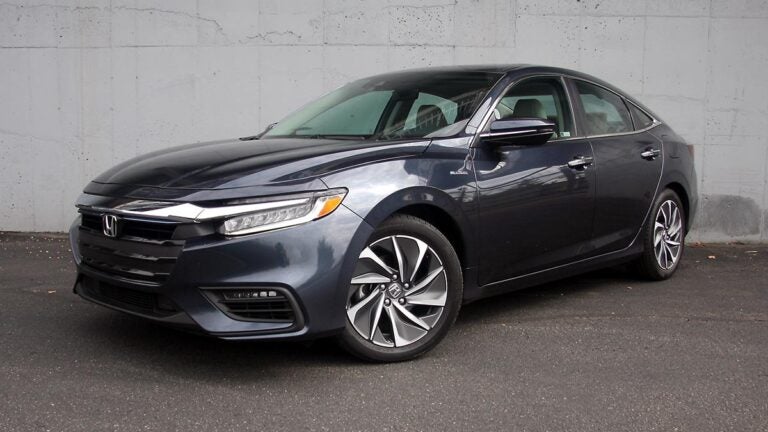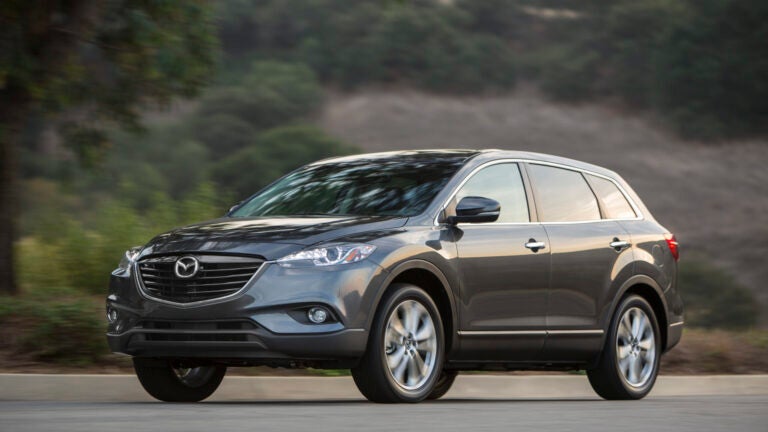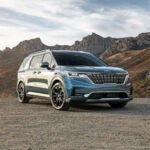The 2019 Honda Insight is a more refined, fuel-efficient Civic
The new Insight features conventional styling, solid road manners, and outstanding fuel economy – all things the prudent car shopper will want.

The Honda Insight has come a long way since it became the first hybrid vehicle on the market in North America. But that was way back in 1999, when the gas-electric hybrid powertrain was a new concept for most people. Many manufacturers had only recently switched from fueling their cars with carburetors to using more efficient, less polluting fuel-injection systems.Then out of the ether came the space pod Insight, with its wind-cheating fender skirts and full wheel covers. It was never a strong seller.If sales numbers indicate anything about the American car-buying public, it’s that people value predictability and convention over most other things. Otherwise, we wouldn’t see so many white, silver, and tan cars on the road, and more people would be driving the oddball hybrids that promise higher miles per gallon and a more “futuristic” future.The new Insight features conventional styling, solid road manners, and outstanding fuel economy – all things the prudent car shopper will want. It’s solid A-to-B transportation backed up by Honda’s legendary reputation for reliability as well as an innovative transmission-less two-motor hybrid-electric system that’s so good you hardly know it’s there.Styling is somewhere between the Civic and the Accord, albeit closer to the latter. The Insight is smaller than the Accord, but less flashy than the sport-oriented Civic. If you could compare the Insight’s sheet metal to a men’s clothing ensemble, it would be a pair of charcoal gray dress slacks, a white button-down shirt, a gray or blue cardigan, and a pair of black oxfords. It’s something a bureaucrat would drive, on or off the clock. The Insight keeps it business-casual, so to speak, which for the average commuter is A-OK.
Goldilocks interior

The Insight’s interior layout is clean and comfortable, and the seats are roomy and supportive.
Like the Civic upon which it’s loosely based, the Insight has a roomy interior and comfortable seats. Quality interior surface materials and a borderless infotainment screen that appears to be floating above the dash give the Insight’s interior a slightly upscale look. Light-colored upholstery, which extends to the lower dash and door panels, only kicks up the classy a few more notches.
The car’s electronic continuously variable transmission (eCVT) allowed Honda to eke out the most space possible in a car that’s less than six-feet wide and just over 15 feet in length. Rear headroom, legroom, and hip room are comparable to the Civic, but with nearly 98 cubic feet of interior volume, the Insight offers three cubic feet more overall space than the slightly smaller Civic. (The Accord’s interior volume is about 103 cubic feet, in case you were wondering.)
The battery pack for the Insight’s hybrid powertrain is mounted beneath the rear seat, so it doesn’t invade territory better suited for cargo. At 15 cubic feet, the trunk is generous for a small car. It’s set up in a way that easily accommodates bulky items, even if the hatch opening is a bit small. The rear seats fold mostly flat to allow for greater utility.
The prognosis from my end? Too bad Honda doesn’t offer this car in hatchback format. (The Civic hatch offers gobs of cargo space for its size, but styling reminiscent of the Fast and Furious film franchise may rub some people the wrong way.)
All the safety features but one
Knobs. They’re one feature Honda never seems to embrace on its infotainment systems. There are a few buttons at the side of the center stack screen to help the user find the home screen, hunt for radio stations, and adjust screen brightness (very important). But dedicated buttons for nav and stereo inputs, as well as a knob for changing stations, would simplify things. We humans may well be tech savvy (most of us, anyway), but we’re still primates, after all.The effective tactile shift-by-wire controls Honda used on the Acura RDX (the buttons are all oriented differently so that they can be operated by feel, without removing your gaze from the road) are also present on the Insight. Bravo, Honda.Although some may want to crucify me for saying so, I think the RDX’s innovative trackpad interface would be useful here, too. It features screen-scale touchpad movement (where your finger presses on the pad is where it activates an action on the screen) and positive-click command execution (to prevent accidental thumbing of controls). It allows the screen to be mounted higher on the dash — out of reach, but still more or less in view of eyes paying attention to the road. The Insight doesn’t have this feature, but it does have a large touchscreen mounted relatively high on the dash.Standard safety features include lane-departure warning, lane-keeping assist, forward-collision warning, forward automatic emergency braking, driver-attention monitor (for fatigue), and adaptive cruise control. Unfortunately, blind-spot monitoring and rear cross-traffic assist aren’t even optional on the Insight. In this car, Honda still uses a lane watch feature that shows the driver’s blind spot in the center screen via a rear-facing camera, and only for the right side of the car. Blind-spot monitoring with rear cross-traffic alert is a more effective system.In crash testing, the Insurance Institute for Highway Safety named the Insight a “Top Safety Pick +” for 2019. It also received a best-possible 5-star overall safety rating from the federal government.
Transmission-less pragmatism

With plenty of cargo volume and seating space, and great fuel economy, the Insight is a practical choice for the daily commuter.
The Insight’s two-motor hybrid system was first introduced in the 2014 Accord Hybrid, so Honda has had plenty of time to perfect it. It features a 1.5-liter, Atkinson-cycle four-cylinder gasoline engine cranking out 107 horsepower and 99 pound-feet of torque, coupled with an electric motor rated at 129 horsepower and 197 pound-feet of torque. Combined system output is 151 horsepower.
Here’s how the system works: At low speeds, the electric traction motor drives the front wheels directly. At moderate speeds, the gas engine is clutched in to drive the wheels directly. Under full load (mashing the pedal to the floor), the electric motor and the car’s 1.1-kwH battery pack assist the gas engine. It will motivate the Insight from a dead stop to 60 miles per hour in a not-too-shabby 7.7 seconds on its way to a top speed of 114 miles per hour, according to Honda. Acceleration isn’t quite as zippy as the Civic’s, but it’s still adequate.
If there’s one drawback about this powertrain, it’s the horrible racket it makes when pushed hard. If you absolutely have to pass someone hammer down, your best option is to turn up the radio to drown the car’s miserable engine drone. Much like sausage and legislation, we don’t want to know (or hear) how the Insight’s power is made.
The combined EPA fuel economy rating for this car is 52 miles per gallon for the lighter base model and 48 miles per gallon for the top-level Touring, which is the model I tested. As with any car, the numbers you get depend upon how you drive. I got 47 miles per gallon on my test loop, but should point out that the pugilistic driving style required to get anywhere around New York City is not conducive to good fuel economy.
People who live in places where the pace of driving is more relaxed will see higher numbers. Naturally, the Insight rewards steady pacing with higher-than-rated fuel economy. It just goes to show that, with the right powertrain, hypermiling works.
A surefire commuter go-to
For those interested in a sober, dependable compact sedan that delivers great fuel economy, it’s difficult to do much better than the Insight. Elegant modern styling on top of a sensible interior and smart powertrain make for the best kind of commuter car – the one you don’t have to pay any attention to. It’s also reasonably priced, with a base price less than $24,000 and an as-tested price – on the top-end Touring model, no less – of just under $30,000.Honda says electrified powertrains will be the norm in 10-15 years. That can be a future difficult to imagine with the number of big trucks and thirsty crossovers flying out of dealership lots right now. But if there’s one thing that’s certain about fuel prices, it’s that they can change rapidly. When they spike again – and they will – a lot of people will be glad Honda has gotten this technology down pat.







